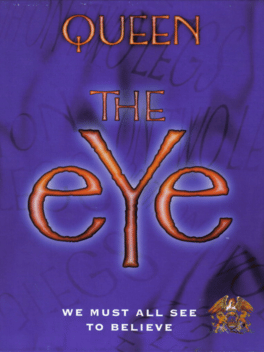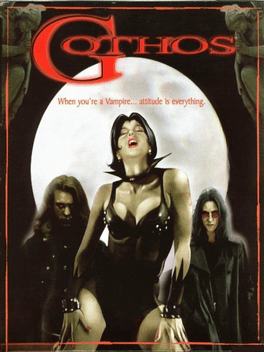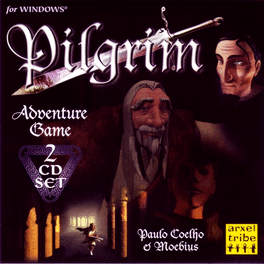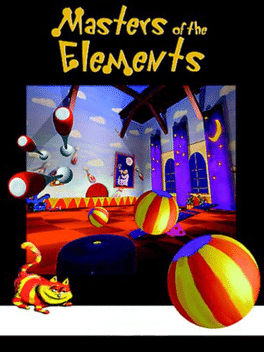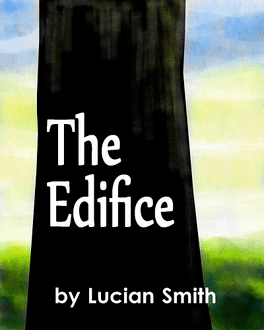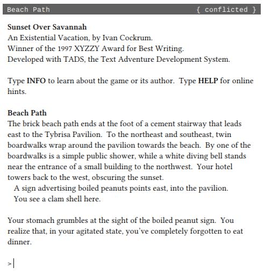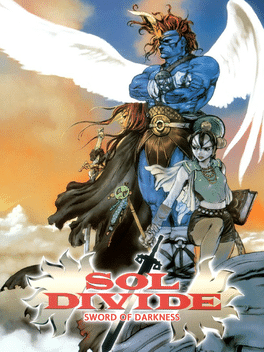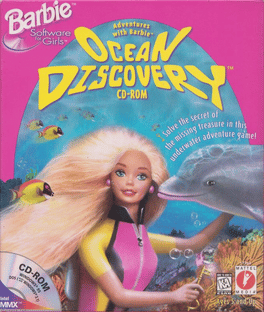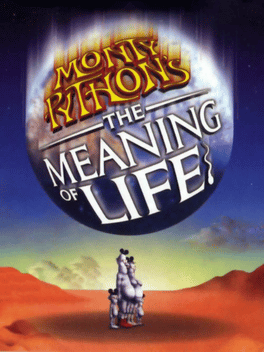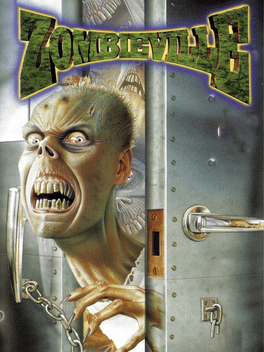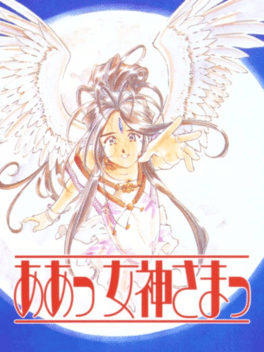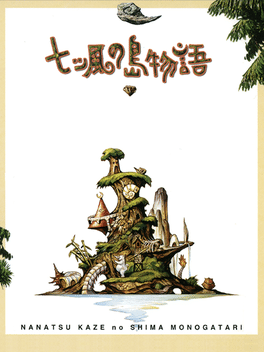New Adventure Games - Page 449
-
Queen: The Eye
1997
Queen: The Eye
1997
Queen: The Eye is an action-adventure game featuring music by Queen. The game is set in the future where "the eYe", and all-seeing machine that has destroyed creative expression in people, is ruling the world. -
Gothos
1997
Gothos
1997
Gothos is an interactive mystery adventure on 3 CDs. Vampire clans from around the world are gathering, and rumors are circulating that the ancient Scrolls of the First Blood have been unearthed. You play as a male or female vampire and are sent by your Coven into Gothos to investigate. Once inside Gothos you will meet the city's many inhabitants. Some will be exactly as they appear to be, but others will be involved in the web of deceit and corruption that must be unraveled to complete your mission. -
Pilgrim: Faith as a Weapon
1997
Pilgrim is an adventure game set in the Middle Ages after the Crusades during the 13th century. It is the time of the Knights Templar, the Black Plague and the Inquisition when many were tortured and burned at the stake because of their religious beliefs. An underappreciated gem by Infogrames, written by eminent author Paulo Coelho. -
The Edifice
1997
The Edifice
1997
Something new in your everyday hunter-gatherer routine: where did this strange edifice come from? Dare you enter and explore the secrets of this... thing, or do you try to face your enemies? Like you have a choice. -
Sunset Over Savannah
1997
Sunset Over Savannah
1997
You're on the last day of your vacation, trying to decide whether to quit your job, and the wonders you uncover as you wander around the beach guide your decision. A piece of interactive fiction written by Ivan Cockrum. -
Sol Divide
1997
Sol Divide
1997
star 4.7Sol Divide delivers players with the action they are looking for and a story that places them right in the heat of the battle in this fantasy-based shooter. With 3 characters to choose from, players will battle their way through various levels in order to beat the evil Iftar who holds the magical sword Sol Divide. With a combination of magic and hand to hand combat, you will be able to defeat Iftar and recover the sacred Spirit Stone. -
Adventures with Barbie: Ocean Discovery
1997
Help Barbie search for sunken treasure with Sandy the dolphin and her ocean friends! -
Monty Python's the Meaning of Life
1997
The Meaning of Life is a Monty Python game based on the movie of the same name. -
The Simpsons: Virtual Springfield
1997
star 5Tour a virtual Springfield in this game released in 1997. -
Zombieville
1997
Zombieville
1997
What connects an emergency at a covert military base with a 200 year-old infant and a graveyard where the dead are rumored to live on? How does Margie Poole know so much about weapons? Who is General Barrow really working for? And just what is the XMZ1A project? Unravel the shocking secrets of Downforth- the town with the kookiest collection of citizens you're ever likely to meet. As lawman Vic Buckmaster would say, "Welcome to our little community. You ain't leaving." -
Aa! Megami-sama
1997
Aa! Megami-sama
1997
The game is a remake of the computer game of the same name. It adds an animated intro, voice-overs, and two mini-games. The story is based on the manga/anime series Ah! My Goddess, depicting the adventures of Keiichi, a Japanese teenager who accidentally summoned the Norse goddess Verdandi (misspelled "Belldandy" in the romanization) and made a wish for her to stay with him forever, which led to all kinds of troubles. What's more, other powerful beings out there are seeking to harm Keiichi's divine girlfriend, so a simple date ends in an unexpected way... The game is a "digital comic", meaning that the adventure elements are reduced to the bare minimum: being able to choose dialogue lines or make other decisions from time to time. The mini-games are a timed exercise of putting puzzle pieces together, and a card-matching game against two female opponents. -
Maria: Kimitachi ga Umareta Wake
1997
An adventure game for the PlayStation and Saturn about a psychiatrist attempting to treat a woman with Dissociative Identity Disorder. -
Rusty
1997
-
Bloody Aria
1997
-
Heisei Shin Onigashima: Kouhen
1997
Heisei Shin Onigashima: Kouhen is an Adventure game, developed by Pax Softonica and published by Nintendo, which was released in Japan in 1997. It is a port of BS Shin Onigashima, a four-part broadcast game released for the Satellaview (a Super Famicom peripheral). This game is composed of the last two episodes of BS Shin Oni Gashima. Heisei Shin Onigashima was first released as a Nintendo Power downloadable game, then later released in two parts as cartridges (Zenpen, Kouhen), much like the original Famicom Disk System version was also divided in two parts. The game was later released for the Wii Virtual Console, in two parts, and for the Wii U Virtual Console (a single release, Zengohen). -
Heisei Shin Onigashima: Zenpen
1997
Heisei Shin Onigashima: Zenpen is an Adventure game, developed by Pax Softonica and published by Nintendo, which was released in Japan in 1997. It is a port of BS Shin Onigashima, a four-part broadcast game released for the Satellaview (a Super Famicom peripheral). This game (Zenpen) is composed of the first two episodes of BS Shin Oni Gashima. Heisei Shin Onigashima was first released as a Nintendo Power downloadable game, then later released in two parts as cartridges (Zenpen, Kouhen), much like the original Famicom Disk System version was also divided in two parts. The game was later released for the Wii Virtual Console, in two parts, and for the Wii U Virtual Console (a single release, Zengohen) -
R?MJ: The Mystery Hospital
1997
R?MJ is an interactive horror game with full voice-acting and movement like Kenji Eno's D, where a video plays to show the player's selected movement. The events of R?MJ take place in the summer of 1999. Hajime and Tomowo rush to the S.T.G. Hospital after hearing their friend Ryo was in a suspicious motorcycle accident, but they're trapped in the hospital after an explosion seals their exit. Together with Aya, a nurse who looks after Ryo, Hajime and friends much find a way out while a deadly virus threatens to end their search for freedom. There's something else amiss about this hospital, however. Strange paintings depicting an ancient civilization decorate the hospital walls. Just what is the Asmos Legend? In addition to looking around for items and solving puzzles, the player must utilize the "5 senses button," which acts as an additional way to investigate. Other characters will prompt you for these moments, such as "what's that smell?" The Playstation version spans 2 discs, whereas the Saturn version fits all -
Nanatsu Kaze no Shima Monogatari
1997
Tales of the Seven Wind Islands is a fantasy adventure game exclusively for the SEGA Saturn by Enix.
